Some of the links in this post may be affiliate links.
Are you wondering how to propagate Chinese Evergreen plants? If you want to create some new plants, I’ll show you 5 different options to propagate Aglaonema plants, including how to revive your mother plant if it’s looking a little sad. Read through them all and decide for yourself which approach you’d like to take.
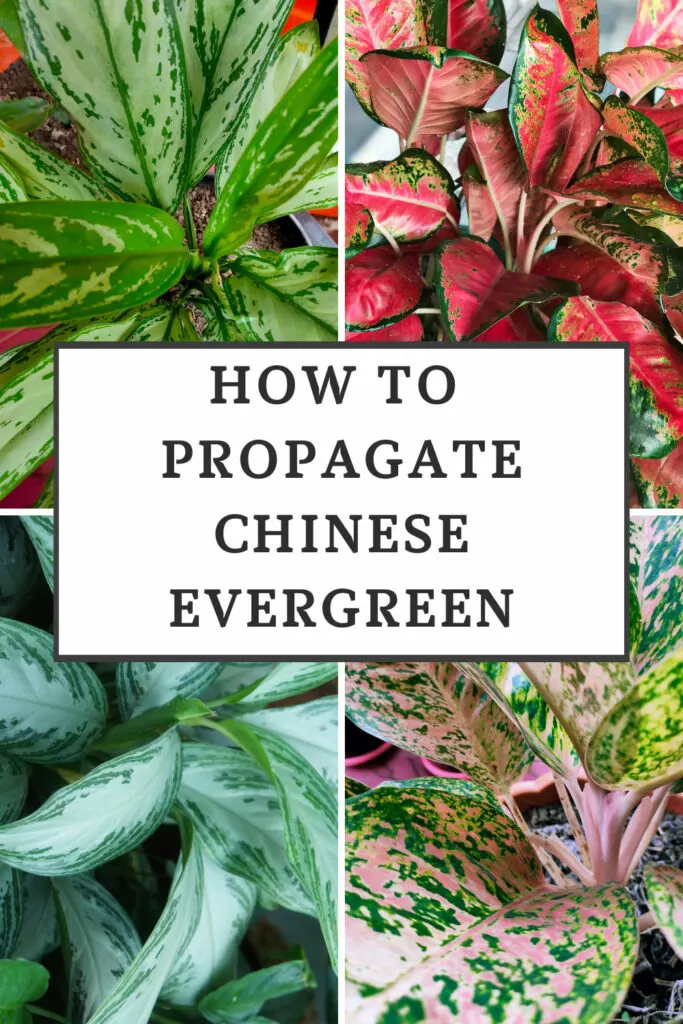
Commonly known as Chinese Evergreen, the genus Aglaonema is one of the most popular houseplants and contains about 25 accepted species (not counting all the gorgeous cultivars). The natural habitat ranges from Northeast India to Papua New Guinea in the tropical regions of Asia.
These tropical plants are wonderfully adapted as indoor plants, are great plants for low light conditions, and are easy to propagate with a little patience.
Here are 5 different ways to propagate Chinese Evergreen.
Table of Contents
HOW TO PROPAGATE CHINESE EVERGREEN
1. STEM CUTTINGS IN WATER
This method is probably the easiest way to propagate, as long as you have patience. I’ve done this many times, and contrary to popular belief, it works well. You just have to be willing to wait.
I’ve rejuvenated an old, neglected Chinese Evergreen this way by taking multiple cuttings and potted them up into a new pot to create a fuller specimen.
Simply follow these steps:
- Take a stem cutting that has about 4-6 inches or so of stem.
- Strip off any lower leaves to reveal a portion of stem that will go under water, but your cutting should still have a few leaves.
- Place your cutting in water with the bare stem submerged like in the photo below.
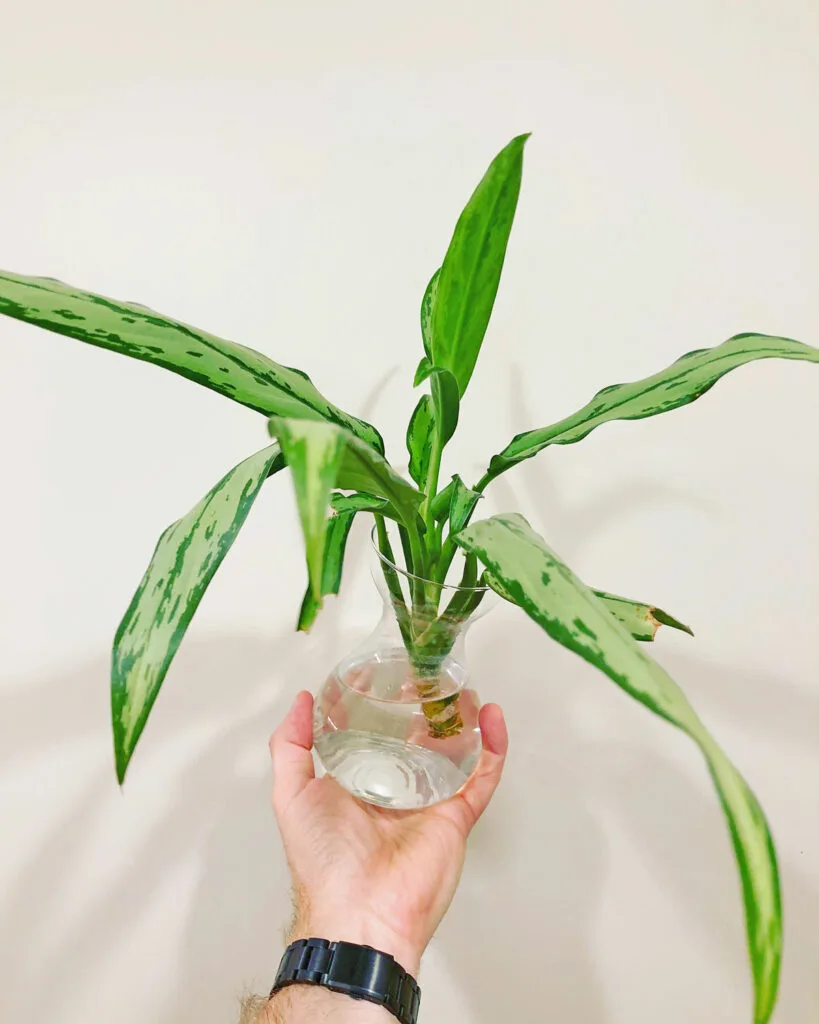
Place your cutting right in front of a window with bright indirect light. No sun is ok, but morning sun from an East-facing window may be beneficial.
Change the water weekly to keep the water fresh and replenished with oxygen.
It may take several weeks to start to show root growth.
Once the roots are 1-2 inches long or so, go ahead and pot it up.
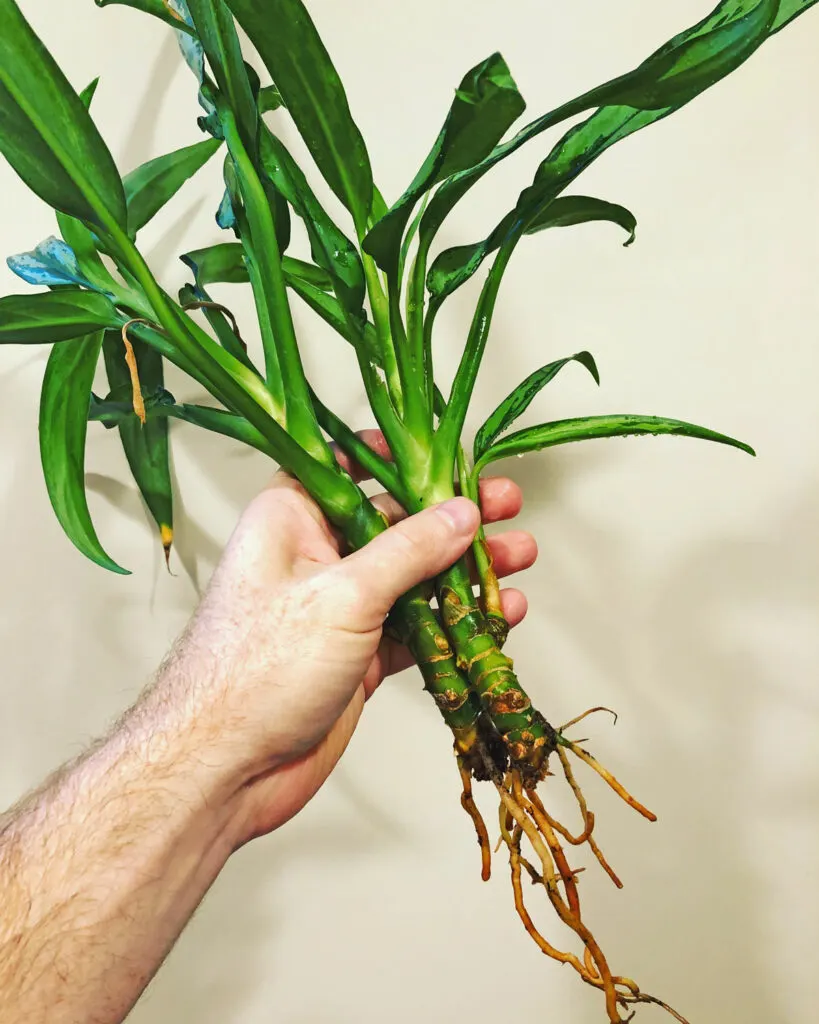
It’s fairly normal for a leaf or two at the bottom of the cutting to turn yellow so don’t be alarmed. Simply take it off.
Note that when taking cuttings, the best time for propagation is during the growing season (spring the summer), and preferable at the start of the growing season, but you can take them at any time of year as long as you provide enough light.
It can even take a couple months or more to root, depending on your conditions.
When potting up your rooted cuttings, if you only have one cutting, use a 4 inch pot. If you have 2-3 cuttings, you can use a 6 inch pot.
If you love water propagation, check out my post on the best houseplants to propagate in water.
2. STEM CUTTINGS IN MOIST SOIL
You can also plant cuttings directly into soil instead of placing them in water first:
- Take a stem cutting that has about 4-6 inches or so of stem.
- Strip off any lower leaves to reveal a portion of stem that will go under the soil line, but your cutting should still have a few leaves.
- Dip the entirety of the stem with no leaves into rooting hormone (link to Amazon). This is not 100% necessary but it helps speed up the rooting process!
- Insert the cut end of your cutting into a pot of moist soil (2-3 parts of all purpose potting mix plus 1 part perlite works well) and bury the bare stem. Be sure the pot has drainage holes .
- Place your pot in a warm location, ideally in front of an Eastern or Western facing window. A window with no direct sun is fine too, but make sure it is right in front.
Be sure to keep your soil fairly moist. Do not let it dry out completely. Water when the top inch or so of the potting mix has dried.
Check out my post on the best soil for Aglaonema for more helpful details.
If you’re looking for an amazing potting mix that you can use straight out of the bag for your Aglaonema, check out the Rainforest Soil Blend from Oh Happy Plants. This is an amazing mix and you will get 10% off at checkout automatically if you use my link.
If you’d like to really speed rooting up, I highly recommend using a propagation mat. The bottom heat will greatly speed up the rooting process. It is inexpensive and well worth the very small investment!
If you place your pot in a spot that doesn’t have too much direct sun, I also recommend using a humidity tent. Maintaining high humidity will help keep your cutting in good shape while it is blooming.
Simply place a couple thin stakes into the pot, and put a clear plastic bag upside down, leaving a gap at the bottom for some air.
After several weeks, you should start to see new growth starting, and you can remove the humidity tent and continue routine care.
3. STEM CUTTINGS IN SPHAGNUM MOSS
Many people prefer rooting in sphagnum moss instead of soil. The process is very similar to what I described above, except instead of placing in potting mix, you’ll place your cuttings into moist sphagnum moss.
- Take a stem cutting that has about 4-6 inches or so of stem.
- Strip off any lower leaves to reveal a portion of stem that will be buried under the moss, but your cutting should still have a few leaves.
- Dip the entirety of the stem with no leaves into rooting hormone.
- Moisten some sphagnum moss in warm water for a few minutes. Then wring out excess water.
- Insert your cutting into a small pot of sphagnum moss. Be sure the pot has drainage holes.
- Place your pot ideally in front of an Eastern or Western facing window. A window with no direct sun is fine too, but make sure it is right in front.
Once your cutting has rooted, gently remove any sphagnum moss and pot it up in a well-draining potting mix. Make sure you use a pot with drainage holes in order to avoid root rot.
4. DIVISION
If you have a mature plant that has multiple stems in the same pot, an instant way to get new plants is to simply use the division method.
This can be conveniently done if you need to repot your root bound Aglaonema.
Simply follow these steps:
- Take your plant out of its pot.
- Inspect the root ball and remove any dead roots using a sterilized set of pruners or sharp knife.I like to use 91% isopropyl alcohol to sterilize my tools.
- Using your hands (you can wear gloves if you’d like to avoid any skin irritation), gently tease the roots apart to separate out as many plants as you’d like.
- Pot up your divisions using a well-draining soil (2-3 parts of an all-purpose mix + 1 part perlite works well) into separate pots with drainage holes.
- Water your new plants and place them in their growing location.
5. AIR LAYERING
Air layering is a great method to make new plants out of ones that have gotten leggy and have lost their lower leaves.
One benefit is that you will not be placing much stress on the plant, since a new plant roots right on the plant before you actually cut it off.
It can be a fairly slow process so patience is required! You will need the following materials:
- Sphagnum moss
- A sharp knife or pruners
- 91% isopropyl alcohol
- Clear plastic wrap
- Twine or twist ties
- Rooting hormone
Here are the steps to air layering your chinese evergreen:
- Figure out a point on the stem where you would like roots to form. You’ll need an area of bare stem about 4-5 inches long.
- Take a sharp knife and remove a very thin outer layer of the stem that goes around the whole perimeter. Remove an area about 1/2 inch tall or so, going around the whole perimeter.
- Take a Q-tip, dip it in rooting hormone and dust the exposed wound that you created and you can also dust areas of the stem above and below this area.
- Soak some sphagnum moss in warm water for a few minutes, wring out the excess water, and wrap the perimeter of the stem where you wounded it, with the moss. Cover the area above and below the wound with moss too. Aim to cover about 3 inches or so of the stem.
- Wrap the ball of sphagnum moss completely with clear plastic wrap. Secure both ends of the plastic wrap with twine or twist ties.
Over the next few months, roots should start to grow into the sphagnum moss. Since the plastic wrap is clear, you’ll eventually see the roots.
Once you see roots, you can cut the stem right under where the rooting occurred, and you can plant up your new, rooted cutting.
REVIVING A CHINESE EVERGREEN
If you’re already taking stem cuttings to propagate in water, soil, etc, you can also take this opportunity to revive your mother plant. Take a look at the photo below.
On the stem that you see in the photo, I had taken a cutting to root separately and left a bare cane with no leaves.
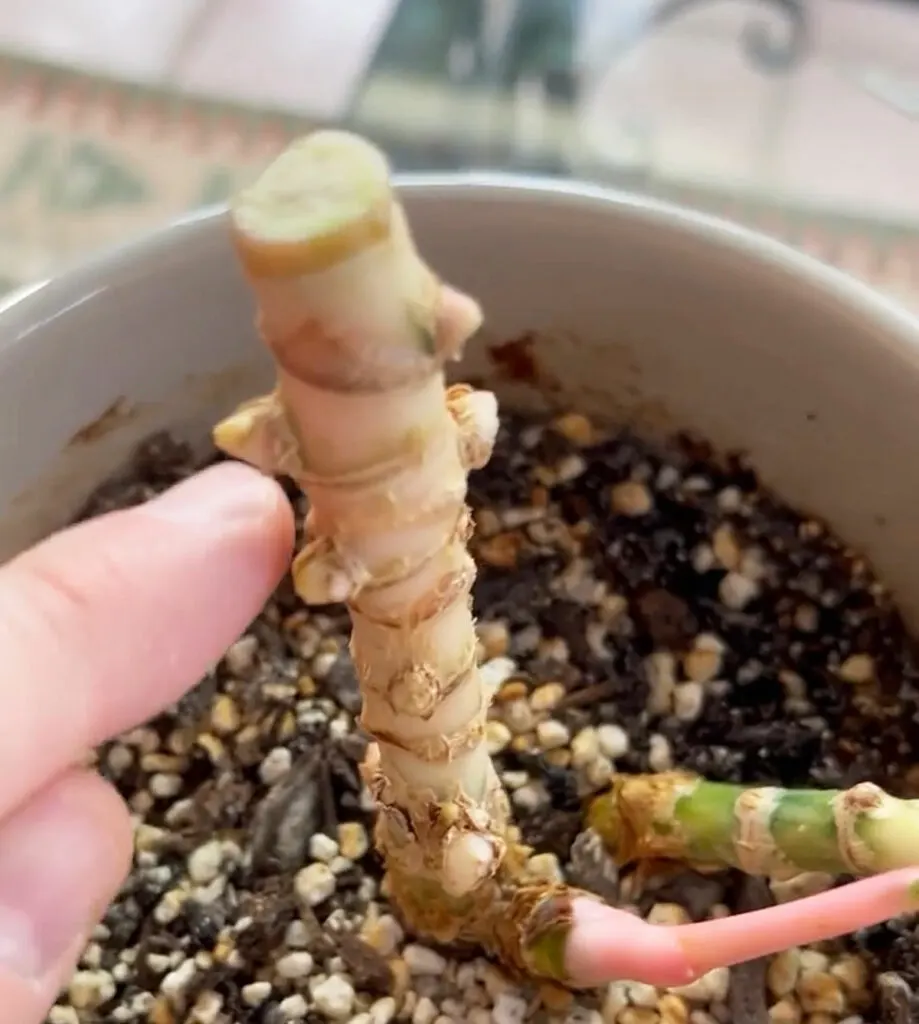
All of the little bumps you see are called eyes, and once you chop off the top of that cane to take a cutting, the dormant eyes along the stem will start to grow.
Take a look at the two new shoots off of the old cane. You can see where the cane was chopped off to make a cutting, and there are two new shoots that formed.
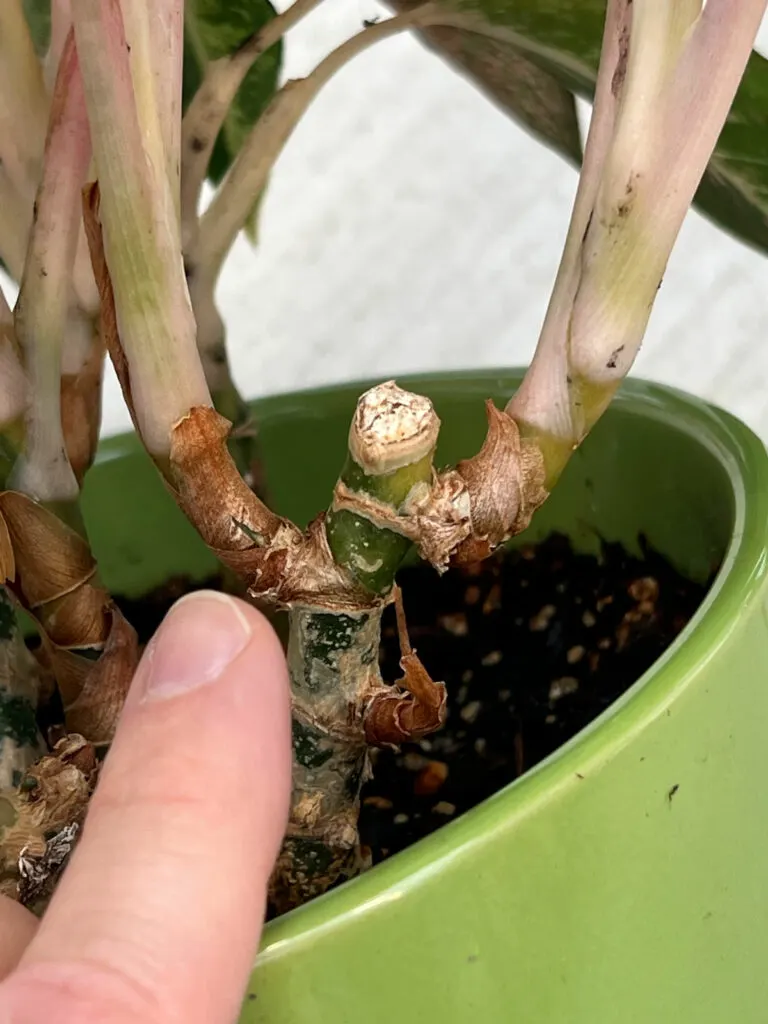
I had taken the original mother plant, plus additional cuttings that I had rooted, and put them all in the same pot to create the brand new plant that you see below.
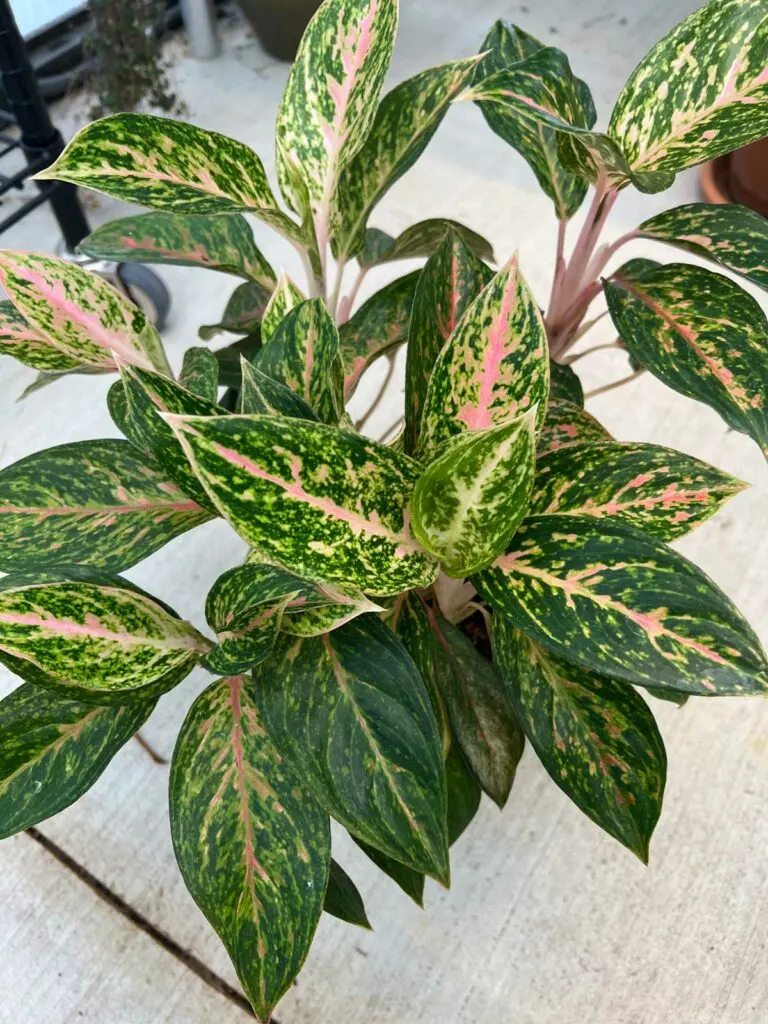
CHINESE EVERGREEN CARE
Here are some brief tips on caring for these plants, but be sure not to miss my informational blog post on Chinese Evergreen Care & Aglaonema varieties for more detailed information.
- Chinese Evergreen is a great low-light plant, but the Aglaonema varieties with brightly colored foliage will need more light to maintain the coloration. Low-light conditions will wash out the bright colors.
- Aglaonema will survive in lower light conditions, but placing them in a brighter location will result in better growth.
- They are also great plants to grow in areas that have only overhead fluorescent lighting, such as office spaces.
- Inside the home, a window with no direct sun, or even better, an Eastern facing window with morning sun, is a great location for growth.
- Water with room temperature water, never cold water, and use a good liquid fertilizer like Dyna-Gro Grow.
- Keep your soil moisture level in a good spot by allowing the top inch or so of the potting mix to dry out before watering again. Try and avoid completely drying out your potting mix. Doing so will cause yellow leaves at the base of the plant.
- These plants are tolerate of dry air, but it would be a good idea to keep the humidity level between 40-60% for best results.
- Keep temperatures warm and avoid cold drafts.
I hope you’ve enjoyed this post on how to propagate Chinese Evergreen.

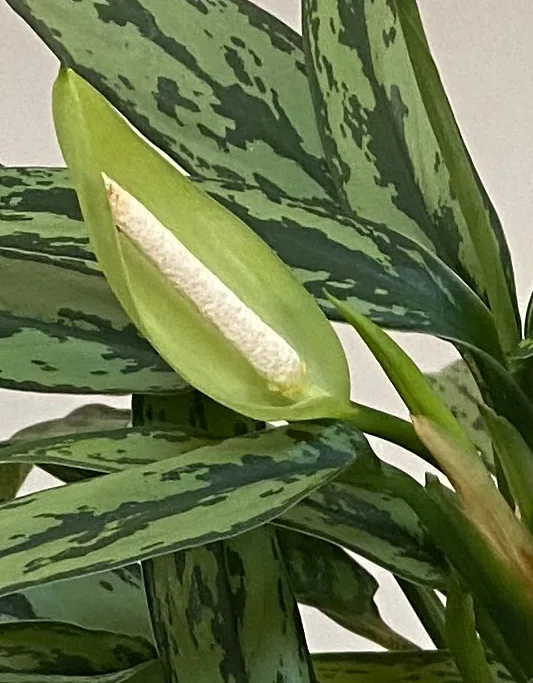
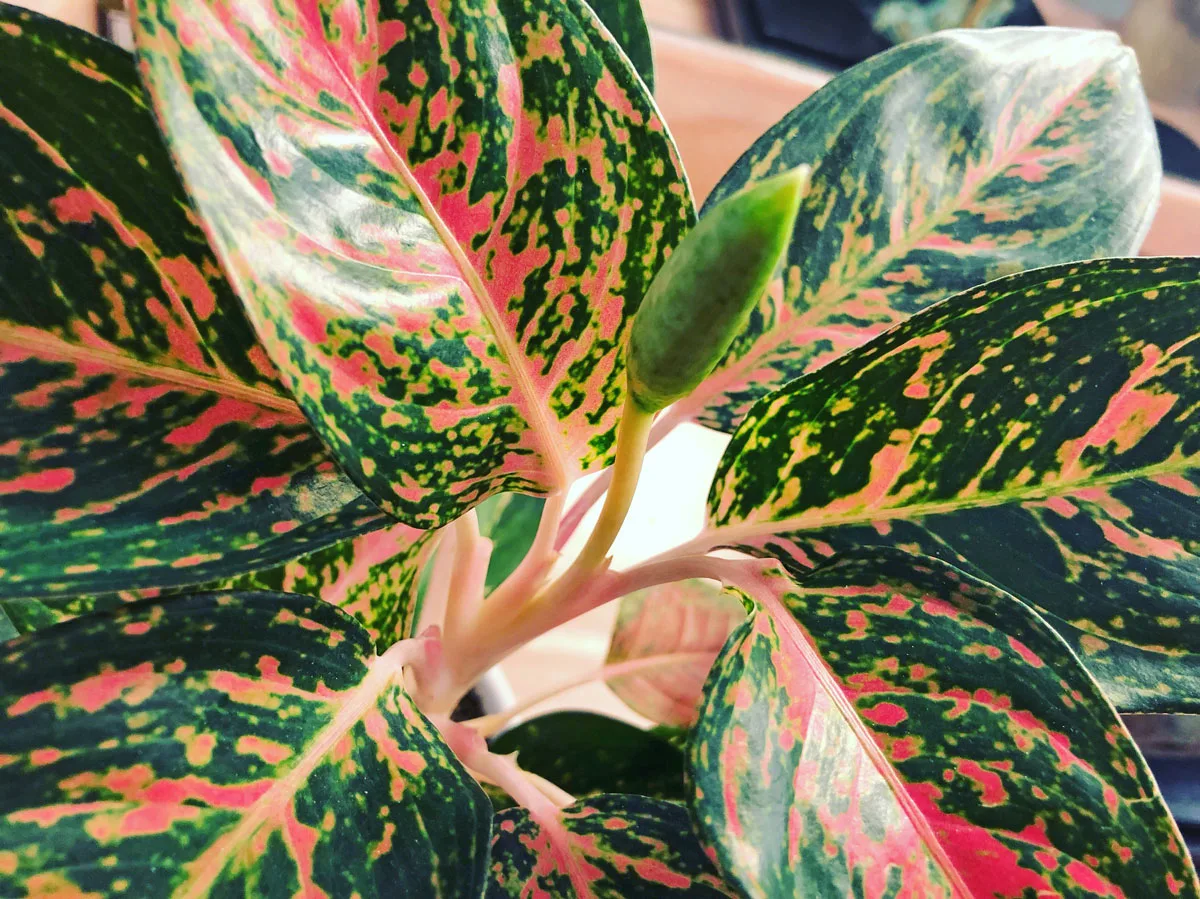
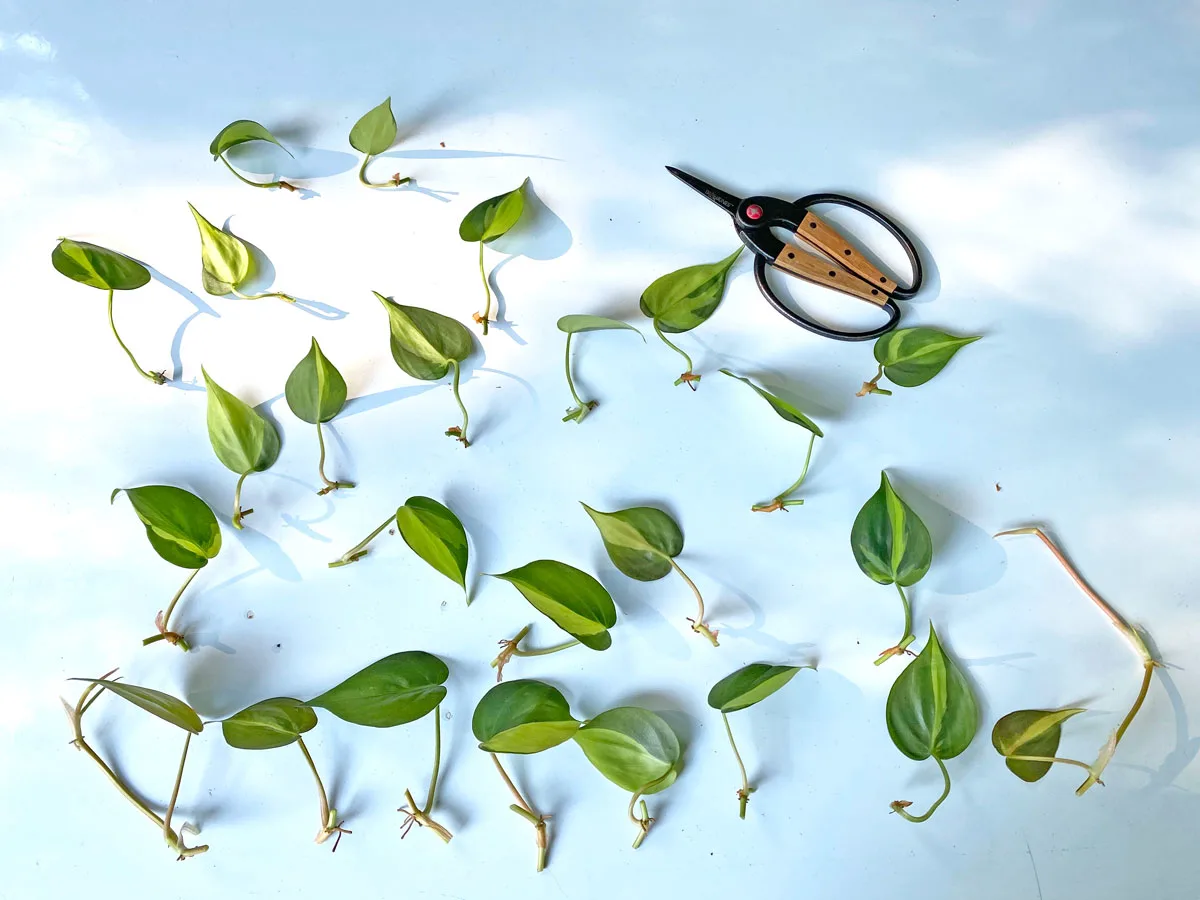
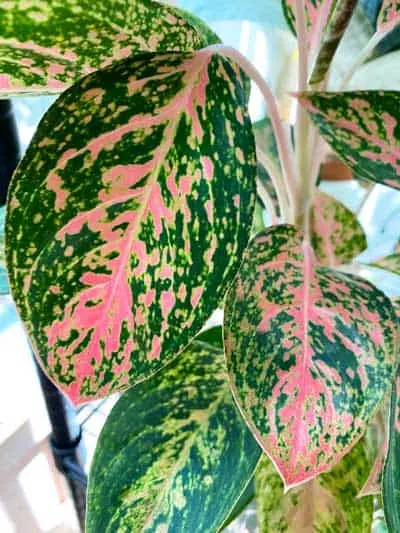
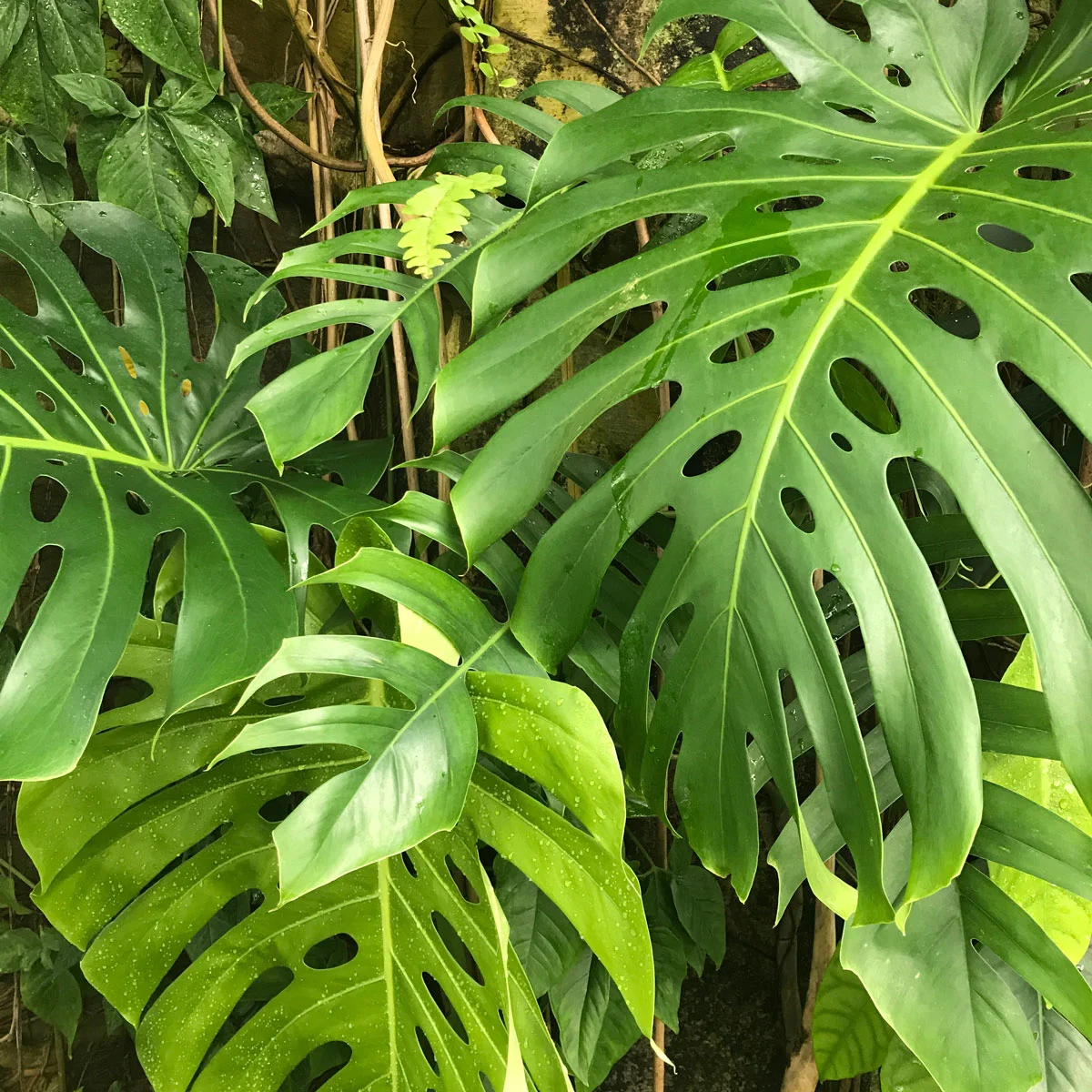
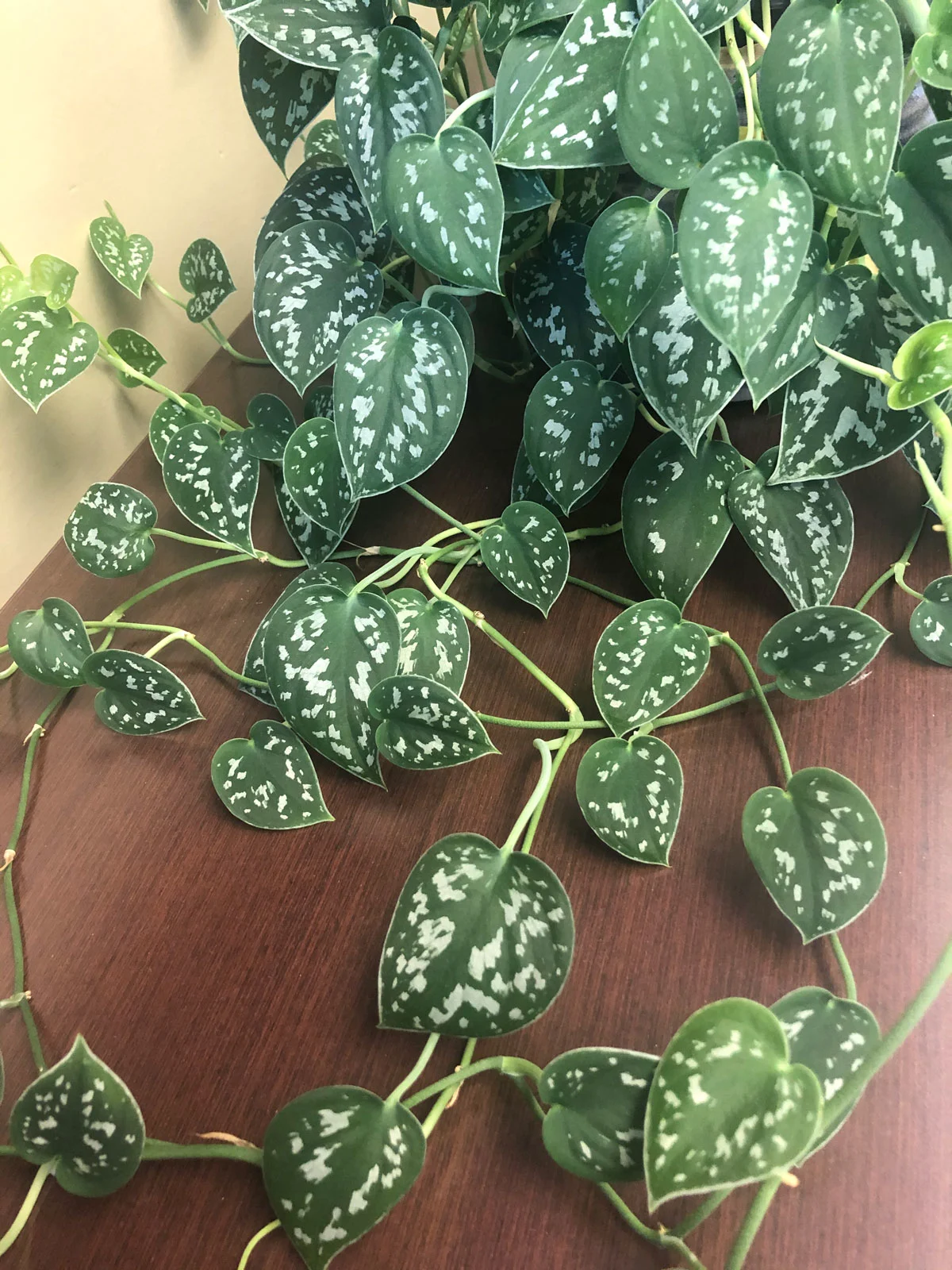
ROSA
Monday 12th of May 2025
An awesome explanation of everything Aglaonema needs! I’m a master gardener, new to tropical plants, absolutely delighted to find you! THX A MILLION!
Raffaele Di Lallo
Monday 12th of May 2025
Hi Rosa! I'm so happy that you enjoyed my article :-)
Lissette
Wednesday 2nd of April 2025
Hello,
Thank you so much for sharing your tips.
When reviving a plant, about how long does it takes for eyes to form shoots?
Raffaele Di Lallo
Saturday 5th of April 2025
It really can depend greatly on your growing environment, the health of the plant, and the care it is receving...it can take weeks or months.
Laureen
Wednesday 21st of February 2024
I have a 20 yr old plant that has 4 stems, almost 4 feet. It has new growth on each. Could I cut one near the soil and then root the new growth area? A new stem is coming up out of the soil.
Raffaele Di Lallo
Wednesday 21st of February 2024
Yes absolutely! But I wouldn't try and root the cutting that is a few feet long. It will be much too stressed. You can chop it up into pieces and root each cutting individually.
Anne B.
Tuesday 19th of December 2023
Best resource of ways to propagate Chinese evergreen I have seen and you have great photos that show exactly what you are talking about. What a breath of fresh air to find this site, there are too many junk sites out there that actually will have people killing their plants!!
Raffaele
Tuesday 19th of December 2023
I'm so glad that you enjoyed the post Anne! I always try to explain as clearly as I can with photos that demonstrate the concepts. Have a wonderful day :-)
James Dixon
Wednesday 5th of July 2023
I have a couple of cuttings or stems that have been in water and no roots are forming. They are developing eyes. Another cut has leaves and some new leaves are now growing but no roots on this one either. I have potted the one with leaves. Any and all help would be appreciated. Jim
Raffaele
Wednesday 5th of July 2023
They can take a while to grow roots, so just wait it out. Do you have your cuttings right in front of a window? How long have they been in water?